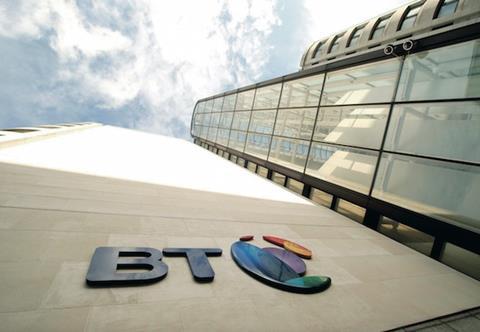
Telecommunications organisation BT Group has reported a 7% mean gender pay gap for fixed hourly pay as at 5 April 2017 across its seven legal entities.
The organisation has reported its gender pay gap data for 84,945 employees, including executive directors, in line with the government’s gender pay gap reporting regulations and ahead of the private sector submission deadline of 4 April 2018. The entities BT Group has reported on include EE, British Telecommunications, BT Facilities Services, Plusnet, BT Fleet, BT South Tyneside and BT Managed Services.
The gender pay gap reporting regulations require organisations with 250 or more employees to publish the difference between both the mean and median hourly rate of pay for male and female full-time employees; the difference between both the mean bonus pay and median bonus pay for male and female employees; the proportions of male and female employees who were awarded bonus pay; and the proportions of male and female full-time employees in the lower, lower middle, upper middle and upper quartile pay bands.
BT Group’s median gender pay gap for fixed hourly pay as at 5 April 2017 is 5.2%.
Its mean gender pay gap for bonuses paid in the year to 5 April 2017 is 29.2%, and the median gender pay gap for bonus payments is 11.2%. Over this period, 59.7% of female employees received a bonus payment compared to 47.5% of male employees. For 2017, 25% of BT Group’s workforce was women, compared to 21.8% in 2007.
More than a fifth (22.7%) of employees in the highest pay quartile at BT Group are female, compared to 23.1% in the second quartile, 16% in the third quartile and 35.3% in the lowest pay quartile.
BT Group has attributed its gender pay gap firstly to a lower proportion of women employed at senior levels within the organisation; currently 29% of senior management positions are fulfilled by women. BT Group aims to increase this to 40% by 2020. The organisation also believes its gender pay gap is influenced by the underrepresentation of women in technical and engineering roles.
BT Group’s analysis demonstrates that its gender pay gap for bonuses is impacted by the number of female employees that work on a part-time basis. If this factor is taken into consideration, the mean gender pay gap for bonus payments is 26.1%, and the median is 3.5%.
To address its gender pay gap, BT Group is working to create an inclusive workplace culture. This includes having champions from the organisation’s Gender Equality Network helping to improve female representation within the business and ensuring that training for senior leaders covers inclusion, diversity and unconscious bias. Furthermore, BT Group is reviewing all of its HR policies to make sure they are inclusive for all staff.
In addition, the organisation has an Inclusion Steering Board, made up of senior leaders across the business, and offers leadership development support to female employees through its TechWomen programme. The 2017-2018 programme is currently supporting 360 women globally. BT Group also ensures to consider flexible working for every job role, focuses on talent and succession to improve female representation and has joined the 30% Club, which sets the target of having at least 30% of women at board level by 2020. BT Group has gender-neutral recruitment policies, which includes looking at broader pools for talent, advertising jobs with gender-neutral language and creating diverse shortlists.
BT Group is also involved in external programmes to encourage more women to join the technology and engineering sector. This includes its TechLiteracy programme, which helps young people develop technology skills, and the organisation also sponsors the Institution of Engineering and Technology’s (IET) Diamond Jubilee Scholarship Programme. This gives financial and practical support to engineering and technology students for the duration of their degree courses.
Gavin Patterson, chief executive officer at BT Group, said: “We recognise that real, lasting change takes time. Some initiatives we are focusing on, like increasing the proportion of female apprentices or graduate engineers we hire, might have a short-term negative impact on our gender pay gap, because the new roles are more likely to be at entry level. But we believe we’ve the right strategy in place to address the gap over the long-term.
“I’m totally committed to maximising the potential we have, by making BT a more diverse and inclusive [organisation], at every level.”











